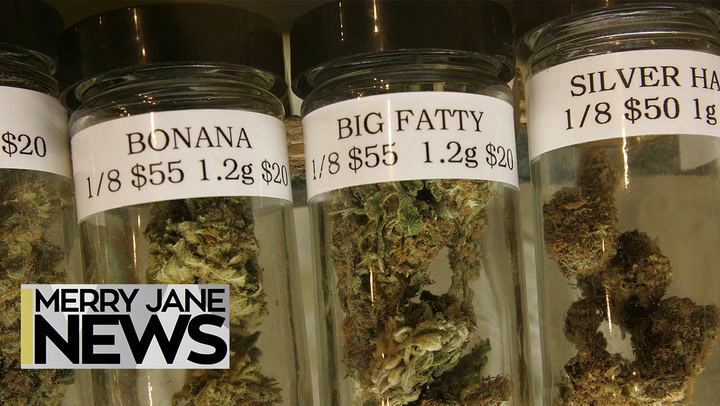ArcView Market Research and New Frontier collaborated on a recently-released report on marijuana with information collected up to the end of 2015. Even the executive summary of the report is a proverbial treasure trove of information and is easily the most informative document on marijuana out there.
The information in this report was “sourced from a wide range of sources including government agencies, businesses operating in the industry, drug law reform advocates, and academic and medical institutions.”
Also, the publishers of the report noted that “this report confirms what pioneer investors and entrepreneurs suspected: legalization of cannabis is one of greatest business opportunities of our time and it’s still early enough to see huge growth.”
For pro-marijuana advocates, there was a ton of good news in this report.
The report had various sales and revenue numbers for 2015 that showed incredible growth where marijuana was legalized across the board.
Such numbers include national sales growing “to $5.7 billion, up from $4.6 billion in 2014,” and that sales from legal recreational marijuana “grew from $373.8 million in 2014 to $1.2 billion by the end of 2015—an increase of 232 percent.”
The report noted that Colorado was expected to have a 77 percent increase in taxes and licensing fees and Washington generated $70 million in tax revenues “even after product shortages and pricing instability plagued the program during its early months.”
Another major number from Colorado in 2015 came last August when “adult use sales exceeded $100 million for the first time,” according to the Colorado Marijuana Enforcement Division.
The demand for legal recreational marijuana was demonstrated in Washington as the state's monthly marijuana sales grew in 2015 by 299 percent “from $18.8 million in January to $75.3 million in December,” and that “edibles and extract sales are already numbering in the hundreds of thousands of units in a single month.”
The Oregon Retailers of Cannabis Association “estimated that sales in the first week alone were $11 million” once legal recreational marijuana became official in the state.
Government intervention against marijuana has always been a struggle for the pro-marijuana crowd. This report documented the steps that have been taken recently to ease this intervention now that states are voting to legalize the plant completely.
Lawmakers in Congress have become very proactive in this department. For example, congress recently slashed the DEA’s budget by $23 million, and the DEA “eased some of the regulatory requirements imposed by the CSA for those who are conducting FDA-approved clinical trials on cannabidiol (CBD), an extract of the cannabis plant.”
Along similar lines, a summary of the Marijuana Business Access to Banking Act of 2015—something that would have seemed impossible to even propose 10 years ago—states that, “This bill provides a safe harbor for depository institutions providing financial services to a marijuana-related legitimate business insofar as it prohibits a federal banking regulator from: (1) terminating or limiting the deposit or share insurance of a depository institution solely because it provides financial services to a marijuana-related legitimate business; or (2) prohibiting, penalizing, or otherwise discouraging a depository institution from offering such services.”
According to the report, congress has also “prohibited the Justice Department from spending resources to intervene in legal state markets that meet certain criteria.”
At the medical level, 2015 was a big year for marijuana realization by the National Institute on Drug Abuse (NIDA) and National Institutes of Health (NIH).
The NIDA modified the language of its website regarding cannabis by summarizing evidence from a couple of studies that showed extracts of marijuana plants and THC and CBD slowed the growth of or killed cancer cells. The report noted this was “a very significant concession for an agency whose research into cannabis had previously focused exclusively on the harms it caused.”
As for the NIH, in 2015 it “announced a request for research proposals to explore the therapeutic potential for cannabis to treat pain.” According to the report, the research that the NIH is willing to fund ranges “from understanding the interaction between cannabinoids in the endocannabinoid system to assessing the role of cannabinoids in the conditions that are highly associated with pain (including diabetes, HIV, and cancer).”
The report also made mention of a pro-marijuana initiative in Ohio that met a slow and terrible death at the polls, but even that turned out to be good news for marijuana advocates.
This is because the initiative “would have limited cannabis production in the state to 10 companies owned by the initiative backers.” The report states that the loss at the polls “proves that voters are not willing to accept it at any cost” and that this result “suggests that voters viewed the status quo with prohibition as a better option than the ten-producer oligopoly proposed by the initiative.”
With all the negativity still surrounding cannabis, these findings are a cause for advocates to celebrate. We're sure they can think of a few ways to do so.











